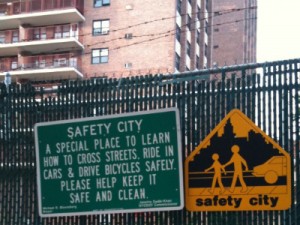
Image by Flickr user Salim Virji
Having the right attitude of being careful and mindful with your camera is the first step to keep it in good working order. Without the right tools with you to keep your equipment safe it may not matter how careful you are. Nobody ever means to break their camera and nobody wants to get it dirty. Accidents happen and that is a fact of life. Having safety gear for your equipment minimizes your risk and will make your life easier so you can focus on taking photos instead of babying your camera equipment. Here are ten things that will help keep you safe when attempting to get “the shotâ€.
- Well Padded Camera Bag – This may seem almost too obvious but being in the camera repair business we see a lot of cameras get damaged from impacts because they weren’t stored in a good bag. It may not always be fashionable and you may even stick out like a sore thumb but having that case will save your gear.
- A Camera Strap – Like the bag, this may seem like a “no duh†item. The funniest thing about the camera strap is almost everyone has it on their camera but many either don’t use it properly, use it sparsely or don’t use it at all. Having (& using) a strap is the first line of defense against accidents in the field. If you don’t like the one your camera came with shop around and find something you will use; there are a lot of cool new types of straps coming out all the time.
- UV Filter – Another common item, however, many settle for the cheap ones. It is true a more expensive filter won’t protect any better but you might not be getting the best images possible. A cheap filter means cheap glass and coatings which equals soft images. You may not need the $100 UV filter but get the sales clerk to pull them out and do a comparison to see the differences; all you have to do is lay them down on the counter with an image under them.
- Caps – Your cameras body cap, the front and rear lens caps take up little to no room and will prevent scratches and dirt from getting in. If you have more than one lens have those with you always.
- High Quality Memory Cards – Whether you are using Compact Flash (CF), Secure Digital (SD), Sony Memory Stick, XD or any other kind of media getting the good stuff is pretty important. Off brand and cheap memory cards tend to corrupt and fail more frequently thus losing ALL of your pictures. For those of you using CF Cards, using low quality cards puts your camera at risk because there is a potential of bending pins inside the card slot.
- Brush – Dust and debris will always accumulate on your camera. Not a good idea to wipe it because you may end up dragging something across surfaces and put a hefty scratch on your gear. This is especially true on your lens and LCD.
- Microfiber Cleaning Cloth – Never use your shirt. It may feel soft to the touch but in actuality it is quite abrasive. Having a quality cleaning cloth will keep your glass and LCD looking like new for a long time.
- Plastic Bags – Mentioned on our last post about extreme temperatures, having some plastic bags for your equipment will do more than just prevent fogging and moisture build up. Having a bag on your camera and lenses while in transit will keep sand and water out; there are even special “bags†for taking photos in the rain and “splash warning†areas.
- Soft Sided Cooler – This may seem like an odd item. To speak to extreme temperatures once again, if you happen to be in a very hot or a very cold environment sticking your gear in one of these will protect it from the elements until you are ready to shoot.
- A Good Tripod – High quality tripods are more stable, tend to be lighter and will definitely last longer. In the long run investing in a good tripod will end up costing you less; in replacing the tripod itself and also in replacing falling camera equipment.
Have fun out there and be safe!